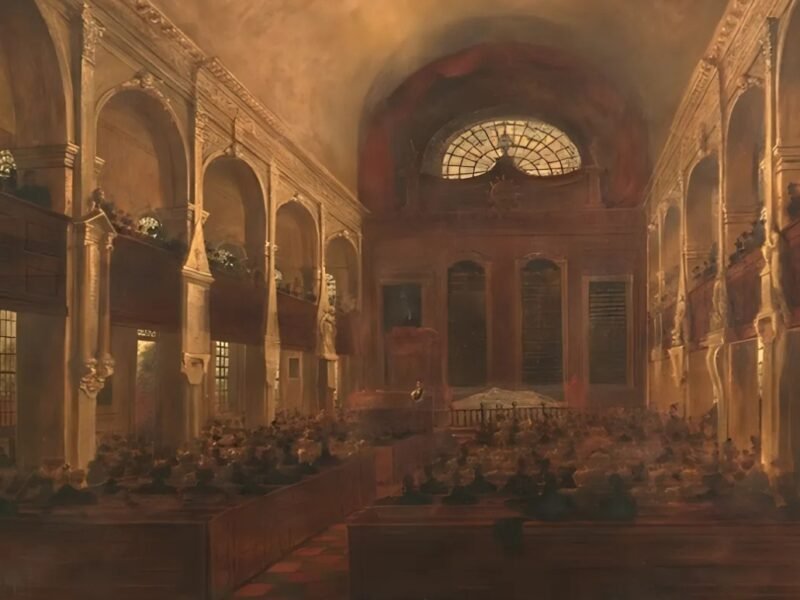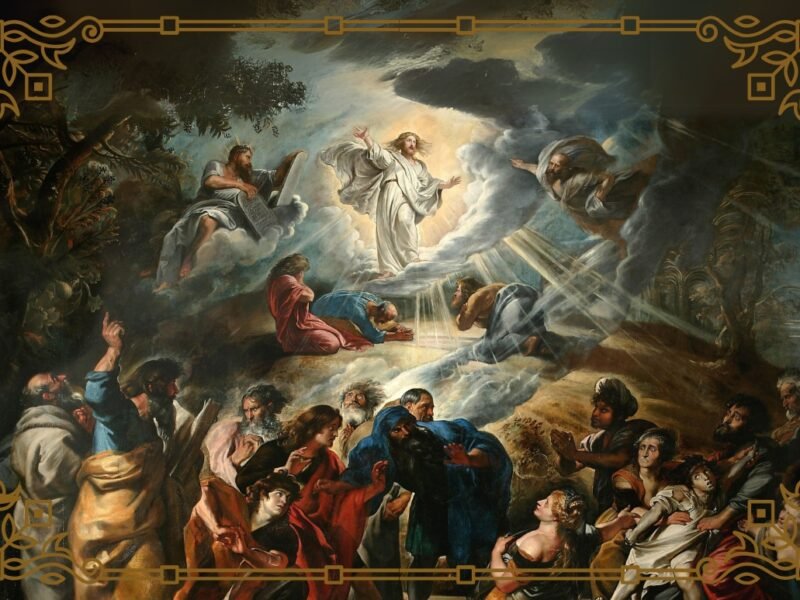As the disruption of Covidtide begins to wane and possibly end, the Church must now reorient itself from survival back to the Great Commission. However, some churches have been hurt more than others.
A nationwide study of offertory collections by The Pillar showed that giving was down dramatically during Lent and Easter in 2020, but mostly returned by the middle of the year; however, the results differed by region, with the greatest drop in the Chicago and Southern California with a slight increase in the Dakotas.[1] Meanwhile, in its ongoing surveys of pastors, Lifeway Research found that many Protestant churches remained closed (or online only) in late 2020 and early 2021, a pattern more common for mainline than evangelical churches.
At the same time, Covidtide provided an opportunity for others to plant a new church. Here I summarize four traditional language Anglican parishes in different states launched in jurisdictions that use the 1928 Book of Common Prayer. Two were from the Reformed Episcopal Church (REC), formed by a 19th-century break from the Episcopal Church but later a jurisdiction of the Anglican Church in North America (ACNA) since 2009.[2] The other two were formed within the Continuing Anglican jurisdictions created in the 1970s, a century after the REC. Together, these examples suggest not only lessons about evangelism during a public health crisis, but perhaps broader insights on how to bear witness in America today.
For 21st century mission and evangelism, both groups have cited the so-called “Celtic model of evangelism,” derived from a stylized version of medieval Irish spirituality proposed by Finney and Hunter.[3] These accounts have emphasized relationships and hospitality rather than doctrinal persuasion of newcomers, a model summarized by the phrase “belonging before believing.”
For the REC, this relational model has been at the center of the REC 100, an audacious church planting strategy to double its size by adding 100 new churches. Conceived in 2015 by Presiding Bishop Royal Grote and his bishop coadjutor, Ray Sutton, the REC 100 was launched in 2017 by Bp. Sutton, successor to Bp. Grote after his untimely death in 2016. As Grote explained:
It is our conviction that mission should be at the center of everything we are and do in the Reformed Episcopal Church. Every Reformed Episcopalian should be a missionary. Each parish should be a mission station. All committees at the parish, diocesan and national levels should factor mission into the center of the business first and foremost. Mission should be of the heart of every aspect of the Reformed Episcopal Church.[4]
Presently, Part I reports the story of the two REC churches: Christ the King (Georgia) and St. Mark the Evangelist (Texas). Part II will report on two Continuing Anglican churches — St. Thomas the Apostle (California) and Trinity Anglican (Indiana) — as well as some overall conclusions on church planting and evangelism during Covidtide.
Georgia: Christ the King
In July 2019, Fr. Tony Melton moved with his wife Vandi and their three (soon four) kids to plant Christ the King REC church in Marietta, a northwestern suburb of Atlanta. They moved from Dallas, where Fr. Tony spent nine years as assisting priest at Chapel of the Cross (REC) and teacher and then headmaster of its (K-12) Saint Timothy School.
In many ways, the arrival of the Melton family resembled a “parachute” church plant, where the church planter shows up in a new town without any prior ties. However, it was able to draw on two local families — one of which was that of Fr. Josh Grote, a bi-vocational REC priest, supply chain executive in Atlanta and son of the late Bp. Grote. It also benefitted from help from Bp. Chad Jones and St. Barnabas Anglican Church (APA) in Dunwoody, 20 miles away, where Fr. Tony and his family worshipped until CTK began regular services.
Crucially, Christ the King is one of four de novo church plants launched by the REC 100 in the past five years, with another 11 missions in various stages of formation. Like other plants, it is supported by the REC’s annual Lenten campaign that seeks a $100 donation from every adult church member.
Beyond supporting and mentoring church planters, the other key element of the REC 100 plan is its focus on creating “Front Porch” ministries, a metaphor for creative ways to connect with prospective members. Consistent with the Celtic model of “belonging before believing,” these often start by inviting others to a conversation rather than the altar rail.
For Fr. Tony, the challenge from his church planting coach was to meet 500 new people in his first three months, holding a three-minute conversation about the church plant, which he completed between July and October 2020. Beyond the quota, one key was to use an indirect rather than direct “ask”:
I would ask every single person to help me plant this church. … If they weren’t going to join the launch team, at least they could connect me with 5 to 10 other people. I really made use of the fact that I’m completely new to this area, we have no friends, it’s a parachute drop church plant, I have a very impossible task in front of me, it’s for the good of the lost, and please help.
What we found was that people were very slow to join us, but very quick to connect us. And without that single tip of not really shooting for people to join us – but really just asking to help us — that was one of the biggest keys for helping us grow in an early phase, when we didn’t have much to offer people because we weren’t even a church yet.
The other was to spend his entire day in his cassock, as he had in his years at St. Timothy’s. After an early test of various forms of dress, he proved to his own satisfaction “there was just no debate – I met way more people when I was in cassock.”
In addition to asking new contacts to help plant the church, the other effective “Front Porch” outreach was Theology on Tap, meeting each week at a different pub. In a highly educated area where beer was popular, it was an effective way to talk about Anglicanism and Christ the King.
A preview service was held at St. Barnabas on Epiphany eve 2020 when the fourth Melton child was baptized. With an eye towards regular Sunday services beginning March 20, the first official service in Kennesaw was held on Ash Wednesday, February 26. Instead, two weeks later, on March 11 the World Health Organization officially declared Covid-19 a pandemic, and the next week states began to declare “temporary” lockdowns. On March 15, the Melton family relocated to stay with family in Missouri for six weeks, with Fr. Tony returning every weekend to serve the mission.
The church faced a dilemma:
The pandemic hit and we had a decision to make. We had communicated that we were a sacramental church that was centered on communion as we said. … We had the question of how do you communicate and keep that commitment to your DNA to be a liturgical sacramental church in a pandemic when everyone just kinda shrugged and went online.
The church went online late March and early April, and asked the families to watch and participate in the morning service. After the Eucharist was over, Fr. Tony brought the consecrated communion to every one of their 14 member families, who would meet him at a specific time in their driveways:
It was a really wonderful season for us. It allowed us to carve out a niche that we would have difficulty carving out otherwise, that we were actually committed to life centered on the Eucharist — and that we were committed to having a high level of pastoral interaction.
At the height of the lockdown, Holy Week 2020 remained online, with families catechized to do foot washing (Maundy Thursday) and stations of the cross (Good Friday) at home and home communion on Easter. By May, the church was meeting outdoors at the wedding venue it had rented, with home communion for those unable to attend. In the peak of the summer, it met inside and was not challenged by local authorities.
In its in-person meetings, the church honored the varying risk preferences of its members. It communicated (via intinction) those willing to do so, allowing members to make their own choice of whether or not to social distance. It had no Covid infections at any time in 2020 (with only one possible case in 2021). By doing so, it attracted members from other churches:
A lot of people came in the May through November [period] because they felt their church had abandoned them. They felt like this was an overreaction politically, societally, and they were very disappointed with the church’s acceptance of what they felt were secular reactions.
For its second Covidtide Holy Week in 2021. Christ the King met in person at the wedding venue, with stations of the cross held in the town square. The next week, Christ the King moved to its new location — a former United Methodist Church — where it is renting space from a local Christian elementary school. In June, it drew 150 people for a confirmation service featuring both its diocesan bishop (Bp. William White) and the presiding bishop (Bp. Sutton).
Texas: St. Mark the Evangelist
If there is a common thread across all the Covid church planters, faithful Anglican parishes report that the pandemic created an opening to offer liturgical worship, when other (at least nominally) sacramental denominations abdicated their obligation to offer succor and the sacraments “in this time of grievous sickness.”[5] This was certainly true in Waxahachie, a town of 40,000 and the county seat of Ellis County, thirty miles south of the skyscrapers of downtown Dallas.
But the opportunity was even more immediate: in the face of Covid-19, the rector of the town’s only Anglican church decided to retire. St. Athanasius Orthodox Anglican Church held its last meeting in May 2020. Because the outgoing rector owned the building, the six parishioners who wished to remain together in community had to start almost from scratch.
After the assisting priest from St. Athanasius showed up at Chapel of the Cross — only a few weeks before the Melton family moved to Georgia — Bp. Sutton sought out a Dallas-area clergyman to move to Waxahachie. He settled on Jason VanBorssum, a Hollywood native and former VeggieTales producer who (with wife Lisa and their son) had escaped California in late 2014 to work for the Episcopal Diocese of Dallas, but left the Episcopal Church in early 2019.
In April of that year, VanBorssum was received into the REC by Bp. Sutton and was helping in Rockwall (an Eastern Dallas suburb) at one of the earliest REC 100 church plants, which (like Christ the King) had been spawned from Chapel of the Cross in Dallas. In the summer of 2020, after being ordained Dcn. Jason, Bp. Sutton asked him to (re)plant the church in Waxahachie, which would be dedicated as St. Mark the Evangelist.
St. Mark’s benefitted from the divided reaction of Texas churches to the Covid restrictions. Compared to other large states, Texas was more open for churches in two ways. First, lockdowns were always politically unpopular and ended earlier.[6] Second, unlike in more secular states, Texas never discriminated against churches in its regulations, but rather deemed houses of worship as “essential” services since the first month of the lockdowns.[7]
Thus Texas Anglican churches (under various jurisdictions) used their own judgment in 2020 and 2021 as to how to best conform to local regulations, with some reopening as early as June 2020. Meanwhile, Catholic and mainline Protestant jurisdictions tended to follow national standards, maintaining restrictions long after other Texas churches had already opened up.
Bp. Sutton was one Anglican leader who strongly encouraged his clergy to serve their flocks.[8] In August 2020, Dcn. Jason joined seven Waxahachie residents for their Wednesday Evening Prayer, and challenged them to pursue this opportunity:
I said … we have an opportunity to be the Church and really to distinguish ourselves because we are the only traditional sacramental expression of the Church in Waxahachie, … considering that the Roman [Catholic] parish had shut down and the TEC parish was shut down. So everyone really got on board with that.
As in happened in Georgia, Dcn. Jason immediately emphasized visibility and a “ministry of place” in his mission field:
I was spending a lot of time in Waxahachie during the week, always in clericals. … I’ve always believed it’s important for clergy to be outwardly visible in the world as clergy.
Normally church planters are told to hold off on Sunday services until they attain critical mass, but in Covidtide, Dcn. Jason saw the opposite dynamic:
Within about eight weeks it was very clear to me, based on the feedback I was getting from folks in Waxahachie who were interested in St, Mark’s. They were all saying “well, as soon as you are meeting on Sunday, we’ll be there.”
He searched for a site available both Wednesday nights and Sunday mornings. He found a storefront in the town’s central business district, one block from the historic Ellis County Courthouse: from this, the church adopted the slogan “Historic Christianity in Historic Waxahachie.” It began Sunday worship on All Saints’ Day, with a tenor from the Dallas Opera as its new cantor and his wife as the organist.
In February 2021, Dcn. Jason was ordained to the priesthood. April brought record attendance of 56 for Easter Sunday. Meanwhile, like many other REC 100 church plants, Theology on Tap continues to attract existing members, potential members, and other interested parties for biweekly discussions of ethics, church history, and other theological topics.
End Notes
- Brendan Hodge, “The pandemic and the collection plate,” The Pillar, March 22, 2021, URL: https://www.pillarcatholic.com/p/the-pandemic-and-the-collection-plate It should note that Sioux Falls/Fargo diocese was the only one to show an increase in contributions — and the only including a state (South Dakota) that consistently ranked in the top five least restricted in the nation. ↑
- In 1873, the Reformed Episcopal Church was formed by Bp. George David Cummings and others who objected to the “Ritualism” of the Episcopal Church. In 2003 and 2005, the REC released new editions of its BCP, which consisted of the liturgies of the 1928 BCP of the Episcopal Church, a second Eucharist service from the 1662 BCP, and material (Athanasian Creed) not found in either. In practice, new churches usually adopt the 1928 BCP. ↑
- John Finney, Recovering the Past: Celtic and Roman Mission (London: Darton Longman and Todd, 1996) and George G. Hunter, III. The Celtic Way of Evangelism: How Christianity Can Reach the West… Again (Nashville: Abingdon Press, 2000). ↑
- “REC 100,” accessed July 21, 2021, URL: http://www.REC100.org ↑
- Based its 1789 and 1892 predecessors, the collect for “In Time of Great Sickness and Mortality” in the 1928 Book of Common Prayer begins “O most mighty and merciful God, in this time of grievous sickness, we flee unto thee for succour.” The prayer was omitted from the 1979 and 2019 BCP and was never present in the Church of England liturgy. See “Virtual Daily Office in a Time of Viral Pandemic,” North American Anglican, April 27, 2020, URL: http://northamanglican.com/virtual-daily-office-in-a-time-of-viral-pandemic/ ↑
- Despite exaggerated predictions of imminent catastrophe, the state ended its mask mandate in March 2021, on the 14th day of Lent. Three weeks later, such predictions were nicely summarized by Jeffrey A. Tucker, “Why Is Everyone in Texas Not Dying?” AIER weblog, March 26, 2021, URL: https://www.aier.org/article/why-is-everyone-in-texas-not-dying/ ↑
- At the tail end of the pandemic, the state legislature passed a law banning local governments from imposing restrictions on churches more strict than state standards. See Carly Ortiz-Lytle, “Abbott bans Texas government from closing places of worship with religious freedom law,” Washington Examiner, June 16, 2021, URL: https://www.washingtonexaminer.com/news/texas-gov-abbott-bans-government-closing-churches ↑
- For example, in April 2020 he encouraged local parishes to find creative ways to provide sacramental worship in compliance with local restrictions, whether it be by holding worship services of “no more than ten people”, conducting worship outdoors, or distributing the sacrament to congregants in their homes. See Ray R. Sutton, Letter to Reformed Episcopal Church, April 1, 2020, URL: http://recus.org/documents/PB-HolyWeek2020-Coronavirus.pdf ↑







'Church Planting in Covidtide: Moral Courage and Sacramental Witness, Part I' has 1 comment
July 28, 2021 @ 12:40 pm Fr. Richard Jones
The Celtic model that is being utilized by the REC100 is truly the most authentic, historic and effective method of evangelism the Church can adopt. To belong before believing invites all people to \”Come and see\” without preconceived expectations or pressure by enfolding those outside the Church into the conversation and allows them to witness authentic Christian community living out its calling and purpose. Those in the world today are not interested in the Church as it currently exists due to its lack of authenticity and genuine human engagement. We have much to learn from the ancient Celtic way. If we will, we will grow the Church and bring great glory to God.